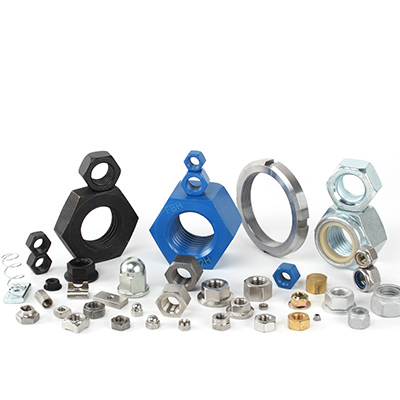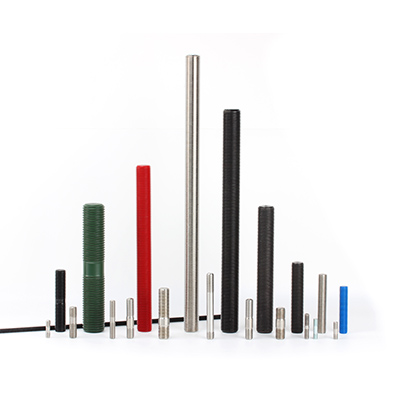
Rivets are permanent mechanical fasteners widely used in industries such as aerospace, automotive, construction, and manufacturing. They are designed to join materials securely, providing high strength and reliability. With various types of rivets available, understanding their specifications and applications is crucial for selecting the right one for your project. This guide will cover the most common rivet types, their functions, and how to choose the best rivet for your needs.
What is a Rivet?
A rivet is a fastener consisting of a smooth cylindrical shaft with a head on one end. During installation, the tail end of the rivet is deformed to create a second head, securing the materials in place. Rivets are known for their durability, vibration resistance, and ability to join dissimilar materials.
Key features of rivets include:
-
Material: Aluminum, steel, stainless steel, copper, and titanium.
-
Head Styles: Countersunk, dome, flat, and universal.
-
Installation Methods: Manual, pneumatic, or hydraulic tools.
Common Types of Rivets and Their Applications
Rivets come in various types, each suited for specific applications. Below are the most widely used rivet types:
1. Solid Rivets
Solid rivets are the oldest and most reliable type, consisting of a solid shaft and head. They are installed by hammering or pressing the tail end to form a second head.
-
Applications: Aerospace, structural steelwork, and heavy machinery.
-
Advantages: High strength, durability, and resistance to vibration.
2. Blind Rivets (Pop Rivets)
Blind rivets are ideal for applications where only one side of the workpiece is accessible. They consist of a mandrel and a rivet body, which expands during installation.
-
Applications: Automotive, electronics, and HVAC systems.
-
Advantages: Easy installation, versatility, and suitability for thin materials.
3. Tubular Rivets
Tubular rivets have a hollow shaft, making them lighter and easier to install. They are often used in applications requiring less strength.
-
Applications: Leather goods, electrical components, and signage.
-
Advantages: Lightweight, cost-effective, and easy to install.
4. Split Rivets
Split rivets feature a split shaft that expands during installation, providing a secure grip on soft materials.
-
Applications: Leather, plastic, and fabric.
-
Advantages: Excellent for soft materials and easy to install.
5. Drive Rivets
Drive rivets are installed by driving the mandrel into the rivet body, causing it to expand and secure the materials.
-
Applications: Wood, plastic, and thin metal sheets.
-
Advantages: Simple installation and no special tools required.
6. Flush Rivets
Flush rivets, also known as countersunk rivets, have a head that sits flush with the material surface, providing a smooth finish.
-
Applications: Aerospace and automotive industries.
-
Advantages: Aerodynamic efficiency and aesthetic appeal.
How to Choose the Right Rivet
Selecting the right rivet involves considering several factors, including material, load requirements, and installation conditions. Here’s a step-by-step guide:
1. Determine the Material
-
Aluminum: Lightweight and corrosion-resistant, ideal for aerospace and marine applications.
-
Steel: High strength, suitable for heavy-duty applications.
-
Stainless Steel: Corrosion-resistant and durable, perfect for harsh environments.
-
Copper and Titanium: Specialized applications requiring conductivity or high-temperature resistance.
2. Assess Load Requirements
Choose a rivet type that can withstand the load and stress of your application. Solid rivets are best for high-strength needs, while blind rivets are suitable for lighter loads.
3. Consider Installation Conditions
-
Accessibility: Blind rivets are ideal for single-sided access.
-
Tool Availability: Ensure you have the necessary tools for installation (e.g., rivet gun for blind rivets).
4. Match Head Style to Application
-
Countersunk Heads: For a smooth, flush finish.
-
Dome Heads: For general-purpose applications.
Installation Tips for Rivets
Proper installation ensures the longevity and reliability of riveted joints. Follow these tips:
-
Use the Correct Tools: Pneumatic or hydraulic rivet guns for blind rivets, hammers for solid rivets.
-
Prepare the Materials: Drill holes to the correct diameter and deburr edges to prevent damage.
-
Inspect Rivets: Check for defects or damage before installation.
Conclusion
Rivets are essential fasteners in various industries, offering strength, durability, and versatility. By understanding the different types of rivets, their applications, and selection criteria, you can choose the right rivet for your project. Whether you’re working on an aerospace component, assembling machinery, or tackling a DIY project, rivets provide a reliable solution for joining materials securely.





